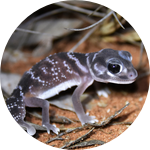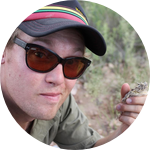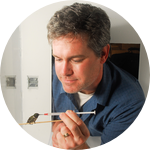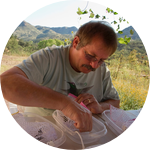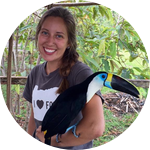About This Project
When hummingbirds use more energy than they consume, they use deep hypothermia (torpor) at night to lower energy costs. Torpor is not restorative like sleep so extended use can have physiological consequences. Our field work suggests hummingbirds might be capable of controlled shallow hypothermia. This would be a novel tool for periods of low energy intake. We will use thermal imaging to track nighttime body temperature to see if hummingbirds use the more restorative shallow hypothermia.
Ask the Scientists
Join The DiscussionWhat is the context of this research?
We have measured hummingbird metabolic rates of both torpid and non-torpid hummingbirds the past two years in Arizona and Ecuador. One striking result was that in both locations some hummingbirds exhibited metabolic rates that were intermediate between torpor and non-torpor. Since nighttime metabolic rate and body temperature are connected, we viewed this as evidence that hummingbirds might be capable of regulating their body temperature a few degrees below their normal body temperature. If true then shallow hypothermia could be used for short periods of time to "sleep" and engage in physiological restoration. During deep torpor, body temperature is so low that this physiological restoration likely does not occur.
What is the significance of this project?
Extensive deep torpor use by hummingbirds has consequences. Torpor is not restorative, so its use for several consecutive nights could disrupt normal physiology resulting in poor condition. In mammals, torpor includes periodic arousals necessary for restorative sleep. Periodic arousals are not an option for hummingbirds because torpor is short-term (night only), and rewarming costs of an arousal would negate overnight energy savings. Use of controlled shallow hypothermia is more compatible with normal sleep, devoid of the rewarming costs of deep torpor, and still provides some energy saving. Broader importance includes understanding hummingbird energy management in response to increasing temperature due to climate change.
What are the goals of the project?
We will measure body-temperature regulation by hummingbirds at night to determine if they are able use shallow hypothermia in addition to deep torpor. While our experiment will involve captive hummingbirds in large cages, the measurements involve non-invasive thermal imaging of individual birds throughout the night. Measurements will be made outdoors so that hummingbirds will experience normal light and temperature variation. This is critical because previous highly controlled laboratory studies of hummingbird torpor might have masked any shallow hypothermic response. Our field site is in Arizona where we can study both territorial and non-territorial species to see if foraging strategy plays a role in how hypothermia is used to manage energy.
Budget
Equipment, travel, and lodging are already funded for this project through external and institutional internal grants. Even so, no funding has been provided for student stipends, so sadly this project will not happen if stipend funding is not found. There are few funding sources that are willing to provide stipend funding specifically for undergraduates, which is unfortunate considering that these students represent the future of science in our country. Collaborator Isabelle Cisneros, the undergraduate student that will work on this project, will devote her entire summer to data collection and analysis so is in need of some compensation.
Endorsed by
 Project Timeline
Project Timeline
Feb 25, 2017
Project Launched
Apr 03, 2017
Lab planning session to schedule training, weekly lab meetings, and prepare for field work.
Jun 05, 2017
Travel to the Chiricahua Mountains, SE Arizona, to begin field work.
Jun 21, 2017
Complete field work in the Chiricahua Mountains.
Meet the Team
Donald R Powers
I am a Professor of Biology at George Fox University, and have studied various aspects of hummingbird physiology/ecology/biomechanics for nearly 40 years. My work on the energetics and biomechanics of hummingbird hovering, published in Nature in 2005, revealed important insights into the mechanics and evolution of this key hummingbird adaptation. In addition I have published numerous works that have added to our understanding of hummingbird energy management, flight metabolism, water regulation, evaporative water loss, and torpor. I am currently wrapping up a NASA-funded study of hummingbirds in both Arizona and Ecuador in which I explored how they will physiologically respond to increases in global temperature resulting from climate change. I received my B.S. degree in biology from Biola University, an M.S. in ecology from San Diego State University (advisor: Dr. George Cox), and a Ph.D. in physiological ecology from the University of California, Davis (Advisor: Dr. Wesley Weathers).
Isabelle Cisneros
I am a junior Biology major at George Fox University. Research interests me because it involves hands-on learning and critical thinking, each of which is critical preparation for my post-graduate education. I plan to attend medical school, but experiences such as this are necessary if I am to become a scholarly physician.
In addition to my interest in research and the medical field, I have a great love for the outdoors. Growing up between the mountains and the coast, much of my lifetime has been spent embracing nature. Field research, therefore, intrigues me because it is an opportunity to combine my love of both nature and science.
Additional Information
If funded this project will provide a critical research experience for a talented undergraduate student wishing to gain an experience that will prepare them for graduate school. Since practical research experience has become an expectation for undergraduates, supporting these types of opportunities is essential for shaping the future generation of scientist! Undergraduate students that work on my projects frequently have the opportunity to cap their experience with authorship on resulting peer-reviewed publications. Here is a link to one example publication Heat dissipation during hovering and forward flight in hummingbirds that is relevant to this proposed study. This study was featured as a Science Shot in the online version of Science! Below are some images of a past study on hummingbird heat dissipation at high temperature (currently being prepared for publication) as part of our broader effort to understand how hummingbirds might respond to climate change.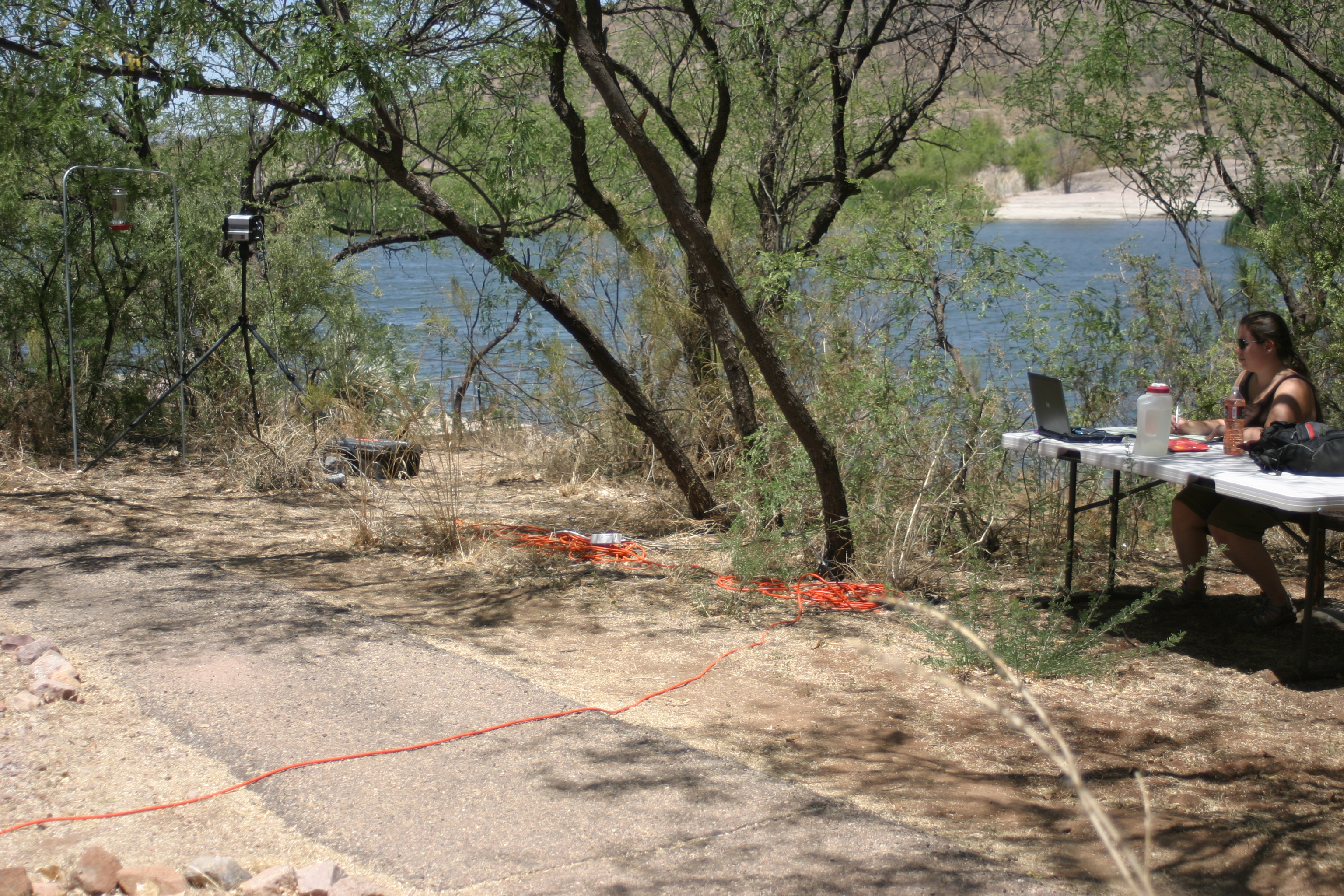
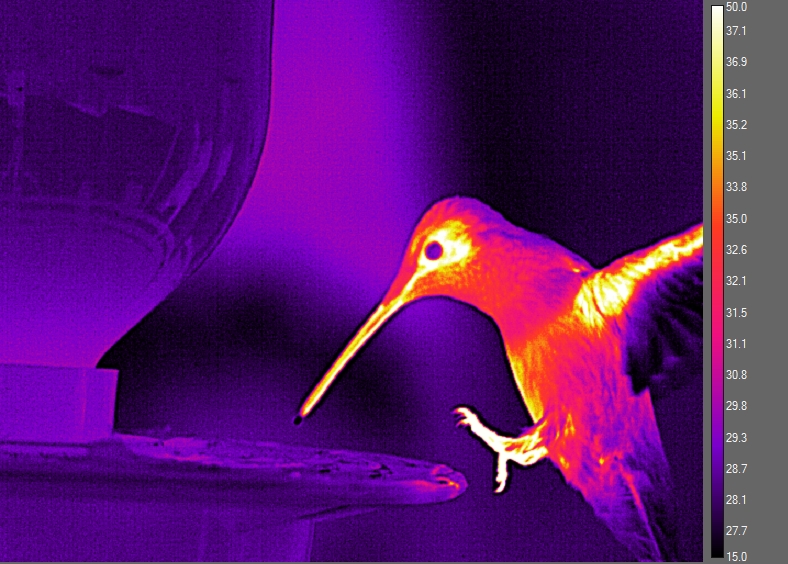
Project Backers
- 31Backers
- 114%Funded
- $4,010Total Donations
- $129.35Average Donation
